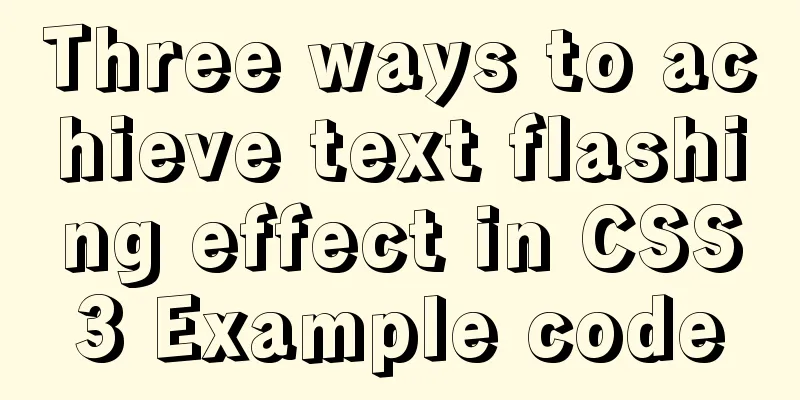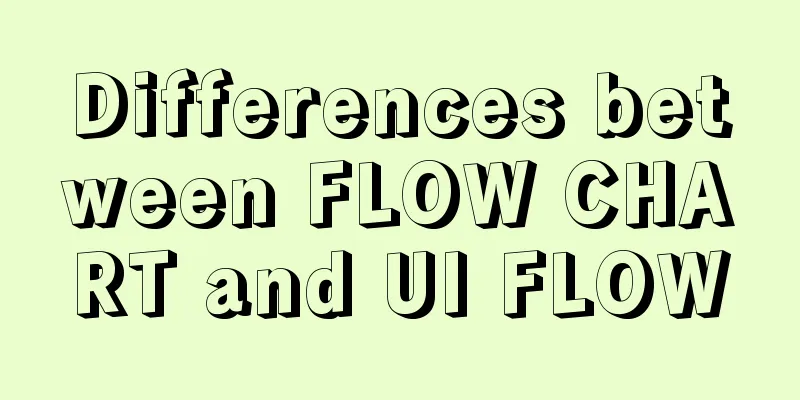Detailed explanation of important cascading concepts in CSS

|
Recently, I encountered a problem in the process of the project. I want the menu-bar to always be displayed on the top, and the subsequent elements are displayed under it. At that time, setting the z-index did not work. I don’t know why, so I found some information about CSS stacking and solved this problem. Here is a record~ The screen is a two-dimensional plane, but HTML elements are arranged in a three-dimensional coordinate system, where x is the horizontal position, y is the vertical position, and z is the position from the inside to the outside of the screen. When we look at the screen, we look from the outside to the inside along the z-axis. Therefore, the elements form a stacking relationship from the user's perspective. An element may cover other elements or be covered by other elements.
So here are a few important concepts: stacking context (Stacking Context), stacking level (Stacking Level), stacking order (Stacking Order), z-index statement:
1. Stacking Context Stacking Context is a three-dimensional concept in HTML. In the CSS2.1 specification, the position of each element is three-dimensional. When elements are stacked, they may cover other elements or be covered by other elements. The higher the position on the z-axis, the closer it is to the screen observer. The article <Things You Didn’t Know About Z-index> has a good analogy, which I’ll quote here; Imagine a table with a bunch of items on it. This table represents a stacking context. If there is a second table next to the first table, that second table represents another stacking context. Now imagine that there are four small cubes on the first table, and they are all placed directly on the table. On top of these four small squares is a piece of glass, and on top of the glass is a plate of fruit. These blocks, glass pieces, and fruit plates each represent a different stacking level in the stacking context, which is the table. Every web page has a default stacking context. The root of this stacking context (the table) is When you assign a z-index value other than
Stacking Context 1 is formed by the document root element. Stacking Context 2 and 3 are stacking levels on Stacking Context 1. They also each form a new stacking context, which contains new stacking levels. Within a stacking context, its child elements are stacked according to the rules explained above. The methods for forming a stacking context are:
Summarize: Stacking contexts can be contained within other stacking contexts, and together they form a hierarchy of stacking contexts. Each stacking context is completely independent of its sibling elements. Only child elements are considered when handling stacking. This is similar to BFC. Each stacking context is self-contained: when the contents of an element are stacked, the entire element will be stacked in order within the parent stacking context. 2. Stacking Level The stacking level determines the concept of the display order of elements on the z-axis in the same stacking context;
Note that the stacking level is not necessarily determined by z-index. Only the stacking level of positioned elements is determined by z-index. The stacking level of other types of elements is determined by the stacking order, the order in which they appear in the HTML, and the stacking level of the elements above their parent. For detailed rules, see the introduction to the stacking order below. 3. z-index In CSS 2.1, all box model elements are located in a three-dimensional coordinate system. In addition to the commonly used horizontal and vertical axes, box model elements can also be stacked along the "z-axis". When they overlap each other, the z-axis order becomes very important. -- CSS 2.1 Section 9.9.1 - Layered presentation z-index only applies to positioned elements and is invalid for non-positioned elements. It can be set to a positive integer, a negative integer, 0, or auto. If a positioned element does not have a z-index set, the default is auto. The z-index value of an element is only meaningful within the same stacking context. If the stacking level of a parent stacking context is lower than that of another stacking context, then setting its z-index higher will have no effect. So if you encounter a situation where a large z-index value doesn’t work, check if its parent stacking context is covered by other stacking contexts. 4. Stacking Order The stacking order (stack order, stacking order, stacking order) describes the order of elements in the same stacking context. Starting from the bottom of the stack, there are seven stacking orders:
Elements in the same stacking order are stacked in the order they appear in the HTML; an element at level 7 will appear above the elements before it, appearing to cover the lower level elements:
5. Actual Combat 5.1 General situation The three See Codepen - Normal case So when no element has a z-index property, the elements in this example are stacked in the following order (from bottom to top):
Red, green and blue are all positioned elements with z-index auto, so according to the 7-layer stacking order rule, they all belong to the 6th level of the stacking order, so they are stacked in the order of appearance in HTML: 5.2 In the same stacking context parent element Red and green are under a See Codepen - Different parent elements but both under the root element In this example, the parent elements 5.3 Add z-index to child elements Red and green are under a If you add an absolutely positioned See Codepen - Setting z-index In this example, no new stacking context is generated in the parent element of the red, blue, green and yellow elements. They all belong to the elements in the root stacking context. Red and blue do not have a z-index set, and both belong to level 6 in the stacking order, stacking in the order of appearance in the HTML;
So the order from bottom to top in this example is: 5.4 In parent elements with different stacking contexts Red and green are under a See Codepen - Parents of different stacking contexts In this example, red, green, and blue are all positioned elements with z-index set, but their parent element creates a new stacking context;
So in this example the order from low to high is: (The situation I encountered is similar to this example) 5.5 Setting opacity for child elements Red and green are under If you set If you add a See Codepen - Effect of opacity As mentioned before, setting
So in this example, the order from low to high is: The above is the full content of this article. I hope it will be helpful for everyone’s study. I also hope that everyone will support 123WORDPRESS.COM. |
<<: Web designer's growth experience
>>: A brief discussion on the correct posture of Tomcat memory configuration
Recommend
Coexistence of python2 and python3 under centos7 system
The first step is to check the version number and...
Installation, configuration and uninstallation of MySQL 8.0 in Windows environment
Software Version Windows: Windows 10 MySQL: mysql...
Vue.js front-end web page pop-up asynchronous behavior example analysis
Table of contents 1. Preface 2. Find two pop-up c...
Analysis of MySQL data backup and recovery implementation methods
This article uses examples to describe how to bac...
HTML+css to create a simple progress bar
1. HTML code Copy code The code is as follows: Ex...
Sample code for implementing 3D book effect with CSS
Without further ado, let's take a look at the...
Summary of various forms of applying CSS styles in web pages
1. Inline style, placed in <body></body&g...
Example of using UserMap in IMG
usemap is an attribute of the <img> tag, use...
HTML Tutorial: Unordered List
<br />Original text: http://andymao.com/andy...
Implement QR code scanning function through Vue
hint This plug-in can only be accessed under the ...
CSS implements Google Material Design text input box style (recommended)
Hello everyone, today I want to share with you ho...
docker logs - view the implementation of docker container logs
You can view the container logs through the docke...
How to use Zen coding in Dreamweaver
After I published my last article “Zen Coding: A Q...
Example of setting up a whitelist in Nginx using the geo module
Original configuration: http { ...... limit_conn_...
A brief comparison of Props in React
Table of contents Props comparison of class compo...












